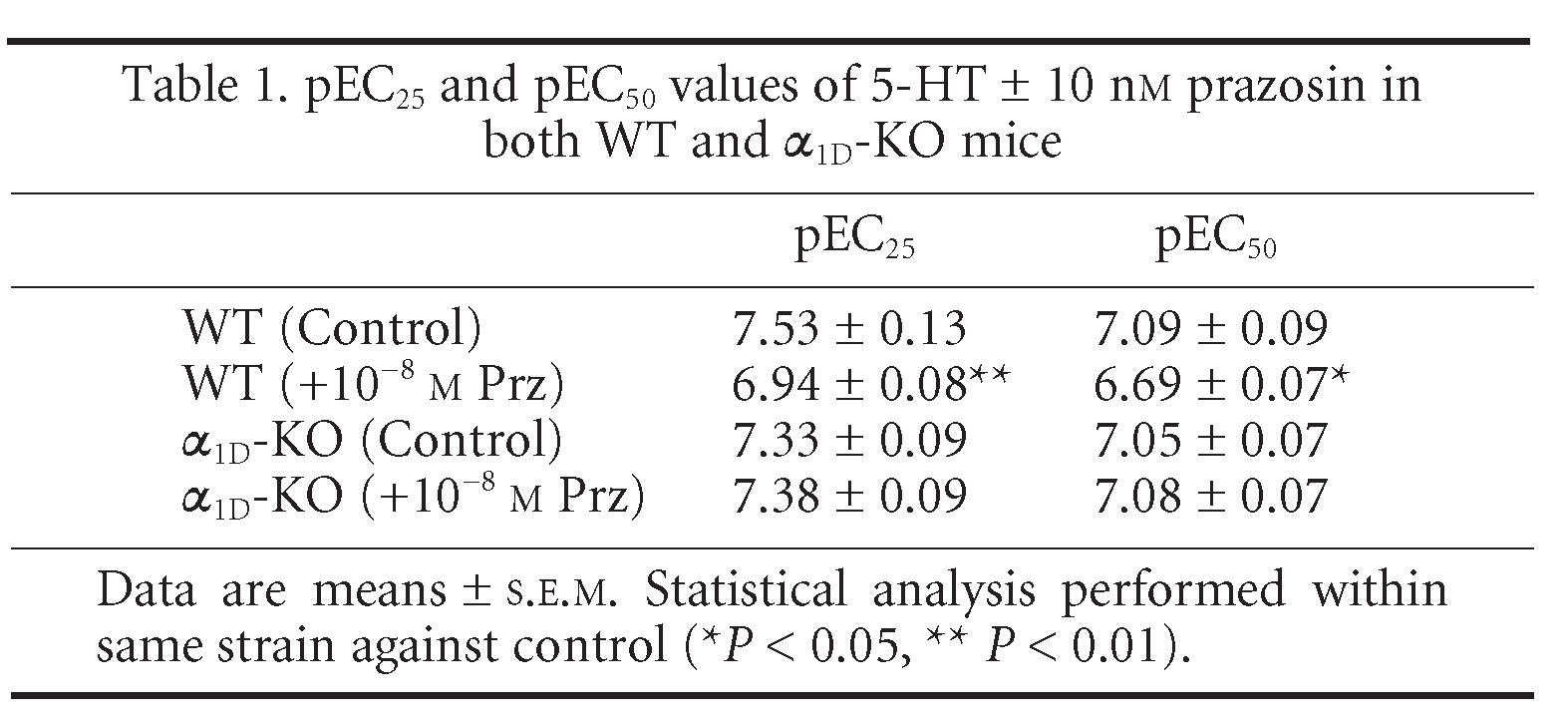Mouse thoracic aorta contracts to 5-hydroxytryptamine through mainly 5-HT2A receptors (McKune & Watts 2001). Shaw et al. (2000) demonstrated antagonism of 5-HT responses by prazosin (α1 selective) in rat pulmonary arteries suggesting 5-HT was acting at α1-adrenoceptors (ARs). The adrenergic response in the aorta has been subtyped as the α1D-AR (Yamamoto & Koike, 2001; Daly et al. 2002). We have now investigated the adrenergic action of 5-HT in the aorta using a transgenic approach.
Four-month-old male (30-40 g) 129/Sv/C57BL/6J control (WT, n = 5) and mice lacking α1D-ARs (Tanoue et al. 2002) (α1D-KO, n = 7) were killed by CO2 and their aortae isolated. Rings (2 mm) were mounted on a wire myograph in Krebs solution at 37°C. After initial challenges to 125 mM KCl and 10 µM phenylephrine cumulative concentration response curves (1 nM-300 µM) were constructed to 5-HT in the presence or absence of prazosin (10 nM). EC50 and EC25 values were compared using a one-way-ANOVA with a Bonferonni post test.
There was no significant difference in maximum responses across all four groups. Sensitivity of 5-HT responses of the WT and α1D-KO mice were similar (Table 1). In WT mice 10 nM prazosin shifted the EC50 (dose ratio = 2.51) response but the shift was more pronounced at the EC25 (dose ratio = 3.89). In the α1D-KO the 5-HT response was unaltered by the presence of 10 nM prazosin.
Our results agree with Shaw et al. (2000) that 5-HT is sensitive to prazosin, shown by the EC50 shift in the WT. However instead of a parallel shift we saw a greater shift by prazosin at the EC25. The antagonism by prazosin of 5-HT does not occur in the α1D-KO. Interestingly the loss of the α1D-AR has not affected the sensitivity of the aorta to 5-HT. This suggests there may be compensation by 5-HT receptors to accommodate for the response lost with the knockout of the α1D-AR. In conclusion, we have shown that the action of 5-HT is partly mediated by α1D-ARs in WT mouse aorta.
This research was supported by MRC. The group is a member of the EC FP5 project ‘Vascan’ (QLG1-CT-1999-00084).

